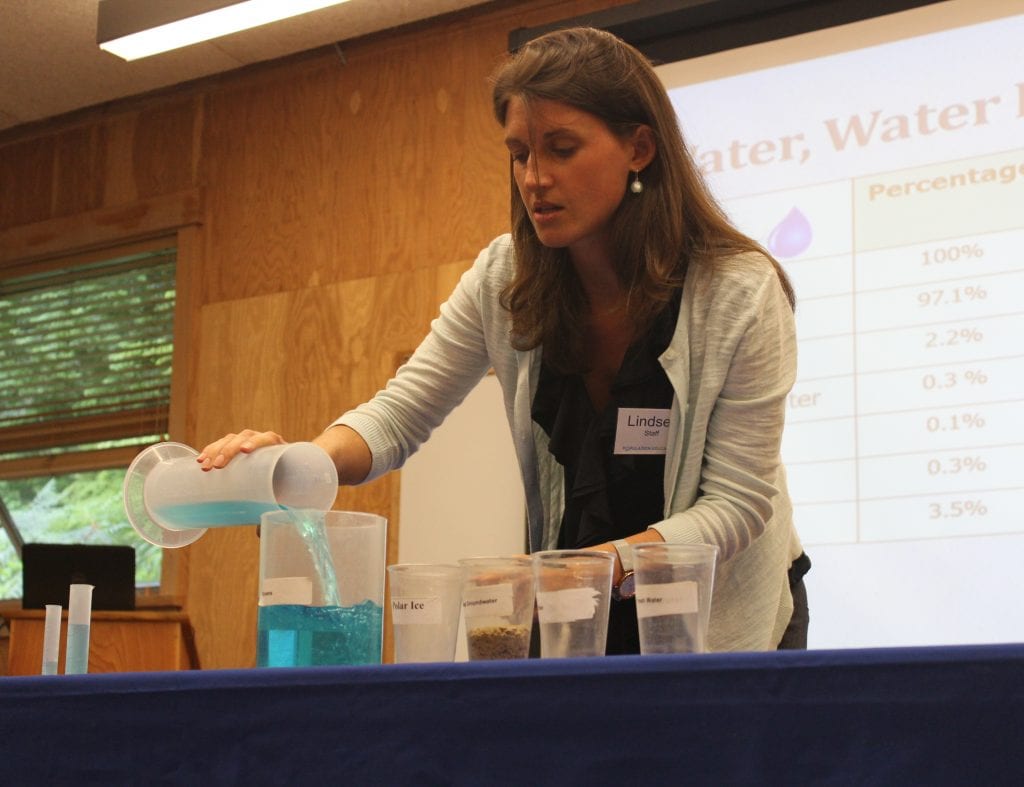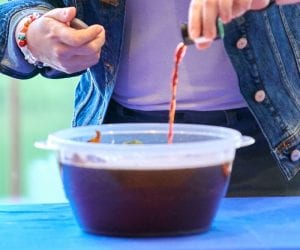This is post 2 of 4 in a series showcasing how Population Education lesson plans can be used to meet the Next Generation Science Standards. This post will feature one elementary lesson plan targeted at meeting a specific NGSS standard. You can read about how Population Education relates to NGSS on the series’ intro post.
NGS Standard: Describe and graph the amounts and percentages of water and freshwater in various reservoirs to provide evidence about the distribution of water on Earth (5-ESS2-2).
Showcase Lesson: Water, Water Everywhere
Curriculum: Counting on People
Grade Level: Upper Elementary (5th grade)
Subject: Science, Social Studies, Math

Lesson Objectives: In this lesson students will be able to:
- Identify the percentage of freshwater on Earth that is available for human use.
- Describe the distribution of different types of water around the world.
- Explain why it is important to preserve the water we currently have available for human use.
Standard 5-ESS2-2 addresses the limited availability of freshwater on earth. 75% of the Earth’s surface is covered by water, but only a small fraction is available for human use. In part one of Water, Water Everywhere, students observe a brief demonstration that highlights the stark contrast between the amount of water on earth and the water available for human use by distributing water between four containers to represent its distribution on earth. In part two, students work in small groups to construct a one meter linear graph by converting distribution percentages into their corresponding lengths.
NGSS Related Extension Activities
Challenge students to come up with their own ways of demonstrating global water distribution. Extra credit can be given to students who construct their own models at home.
Have students conduct a water consumption audit. The PopEd lesson Every Drop Counts has students calculate their own direct and indirect water usage. Every Drop Counts is also available on our Counting on People Curriculum CD.
Encourage students to be solution oriented by investigating new products that conserve water (low flush toilets, shower heads, etc.) and conducting a cost-benefit analysis. This also addresses the practice dimension of the National Research Council’s framework by having students evaluate the efficiency of technological solutions.
After researching and evaluating current water conservation technology, have students brainstorm and design additional solutions to conserve water resources as a STEM related extension activity. Students should consider what technology and materials they would need to carry out their solution.
NGSS Lesson Plan Showcase:
Intro: How to Meet the Next Generation Science Standards with Population Education
Grades 6-8: NGSS Lesson Plan for Middle School – How Much Space Do We Need?
Grades 9-12: NGSS Lesson Plan for High School – Bye, Bye Birdie



